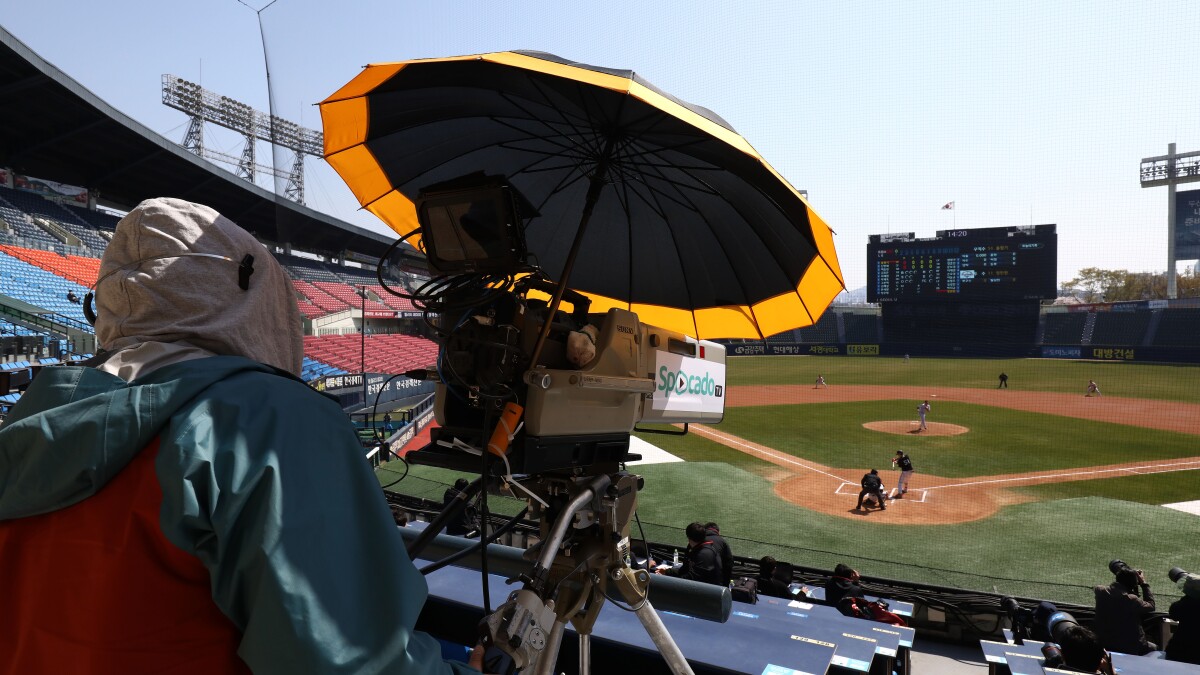It was a regular season unlike any other. A pandemic is raging and things had to change for us to be able to broadcast a baseball season. Was it ideal? No. Was it necessary? Yes. Was it challenging? Yes. Did we manage to make it fun and entertaining? Yes, we most certainly did.
As I look back at my first season as the play-by-play announcer for the White Sox, the thing I’m most thankful for is health. Not just mine and my broadcast partner Darrin Jackson, but for the players we talk about every day. The White Sox had a couple of cases of COVID, but they were before the Summer reboot took place. I’m amazed that with all that happened to the Marlins and the Cardinals, the season was completed in its entirety and in competitive fashion.

However, there were pitfalls from the broadcast standpoint. Trying to get used to calling some games off a television monitor and some with live action in front of us wasn’t something we could prepare for. Broadcasting a road game from a dark stadium with absolutely nothing going on was extremely strange. Sometimes even though the game was not in our home park, the first foul ball straight back would cause us to flinch as if the game were right there in front of us. We couldn’t help but laugh.
Laughing was a common occurrence. As professionals, we certainly like to get every call correctly, but this year, being at the mercy of a television crew, that became difficult in some instances. Rather than get upset, we’d laugh it off, constantly reminding each other of a gaffe or a misidentified pitcher or batter. Our collective thought was not to complain about it, but to keep it light. After all baseball was being played, we were calling games and that’s really all that mattered.
So, how did it go? Pretty well. There were things from a play-by-play standpoint that were unusual when calling a game from television. On radio we usually try to call the action as it’s happening, but it was difficult to do when not everything could be seen. The biggest thing to get used to was “laying back”, taking more time to make calls when our team was on road. It wasn’t easy, but it had to be done. I’d say about 75-80 percent of the time, I did it, but sometimes fell back into the uncertainty of what I was seeing.
We were very dependent on the ability of a TV crew in the opponent’s ballpark to provide us with clean shots and timely cuts. Some crews were terrific, some were a little less than terrific.
As frustrating as it got sometimes, I had to remember that this is new for everyone, not just me and my fellow broadcasters. MLB made sure to listen to the concerns of each club’s broadcasting departments and made changes as the season went along.

As the year went on, we were given a little more consistency from ballpark to ballpark in the way our alternate feeds measured up. It was important for us to have a full view of the field at all times. We were provided with a “tiled” monitor that featured an “All-9” camera angle. This was a static shot from high above home plate. Why was this helpful? To see if a runner was trying to steal a base. Being able to see where a ball in the gap was going and how the runners that weren’t pictured in the live television shot were going or where they stopped. Was there a shift on for a batter? This angle helped to answer the questions for us. Also, on the alternate monitor was a shot of both bullpens, the between innings clock, the scoreboard and sometimes the program feed as well.
All things considered I think baseball broadcasters were well-served by MLB and the various crews around the league. Our sport, probably more than the others that were calling games from afar, is more set up for this oddity of not being there. Baseball is a slower moving sport with bursts of action, so as long as we could identify the pitcher, batter and balls and strikes we were doing ok. With public relations crews for each team being on site, we were texted substitutions, who was up in the pen and scoring decisions. I can’t imagine how it must have been for several other sports where the game is faster paced and substitutions are not readily announced.
My radio station in Chicago also is the flagship home of Chicago Blackhawks Hockey. The broadcasters, John Wiedeman and Troy Murray, were set up in a conference room at the station with a barrier between them for social distancing. They had two huge monitors in front of them and a smaller one located near the play-by-play position. As you know in hockey, players are jumping on and off the ice all game long. There is no stoppage of play to announce the new players on the ice. Oh, and yeah, the lines constantly change during the game, so a line that started the game together may not finish the game together. To be able to identify all the players on the ice consistently from a monitor with the game broadcast on it, is something at which I marvel.
The puck moves at such a high rate of speed, it’s a challenge every night for these guys when they are actually in the arena. To be dependent on a TV crew is probably frightening for most, but these guys are terrific at what they do and all made the best of whatever their situation was.
I’m not sure how they and the other hockey guys on radio were able to do this, but in the case of the Chicago crew, they made it sound as if they were at the arena. I listened and pretended I didn’t know they weren’t on location, it sounded terrific.
Basketball is a little different, because most of the action is happening in that confined space of the half court. Television crews usually stay on the wider shot and with that, both the play-by-play announcer and analyst can really see what’s going on at all times. This is usually the kind of view announcers are used to ‘seeing’ when doing games from the venue. That’s the area of concentration and where most of, if not all of the action in a sequence takes place.
It was still a challenge, I’m sure, with not being able to see some of the other things happening at the arena. Is there a coach working an official after a no-call, did a player trip or get hurt coming back down the court or is there a player walking down the tunnel with a trainer? You can’t possibly know if you aren’t there.

I learned a lot this season. I realized how critically important it is to have a mutual respect between play-by-play and analyst. This year we had to really protect each other, be good partners because the circumstances really demanded it. In the end, we were all in the same boat. Sometimes it felt like there no paddles, but somehow the boat navigated the waters of this crazy pandemic shortened season and we wound up in the right place.
Andy Masur is a columnist for BSM and works for WGN Radio as an anchor and play-by-play announcer. He also teaches broadcasting at the Illinois Media School. During his career he has called games for the Chicago Cubs, San Diego Padres and Chicago White Sox. He can be found on Twitter @Andy_Masur1 or you can reach him by email at Andy@Andy-Masur.com.



